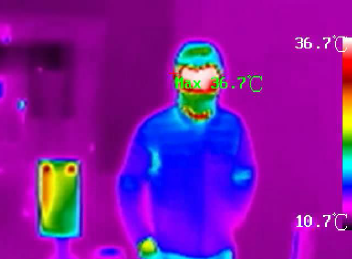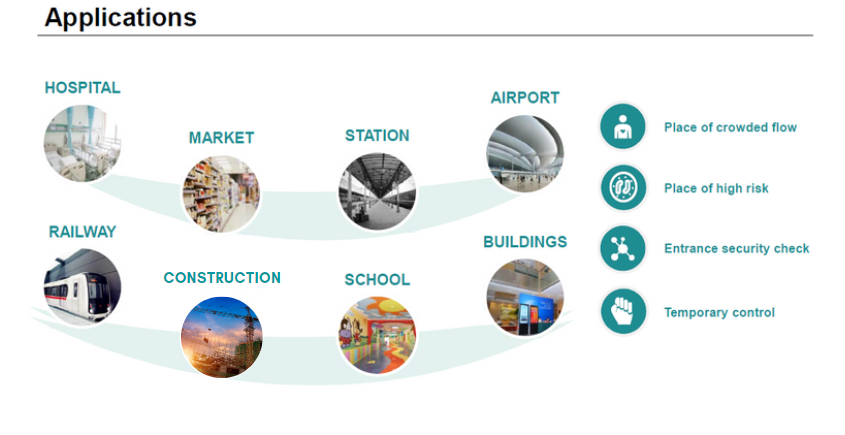

Thermal Cameras produce images that are based off the heat coming from an object or person.
Thermal Cameras are less sensitive to light conditions such as shadows and low-light areas than a typical surveillance camera making it the more accurate choice.
During these uncertain times, Thermal Cameras not only provide surveillance of an area, but can also check body temperature of staff, customers, and anyone on the property.

Principle
- Any object with temperatures above absolute zero emits a amount of radiation.
- A thermal camera converts IR radiation into grayscale values, and matches grayscale values to temperature values through an algorithm model.
- The model (Temperature Gray Level Curve) is obtained via blackbody calibration.
Application
- Elevated body temperature is one of the most common symptoms of many infectious diseases, including COVID-19. Thermal cameras with high temperature accuracy can detect an elevated body temperature to make a preliminary screening.
- Thermal cameras can be used for the screening of travelers, shoppers, and office workers.
- Suggested locations for thermal cameras: Construction Sites, Grocery Stores, Office Buildings, Airports, Train & Bus Stations, and Shopping Plazas.
Advantages
- High Efficiency: It takes only one second for a thermal camera to detect temperature of a person, thus they allow screening of large numbers of people at a time.
- Safety: Thermal cameras feature non-contact temperature measurement from one meter to 9 meters away, avoiding unnecessary physical contact.


